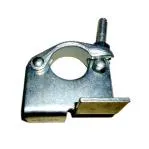- Phone: +86 132 8320 1810
- Email: annie@wrkgroup.ltd
-
- Afrikaans
- Albanian
- Amharic
- Arabic
- Armenian
- Azerbaijani
- Basque
- Belarusian
- Bengali
- Bosnian
- Bulgarian
- Catalan
- Cebuano
- China
- China (Taiwan)
- Corsican
- Croatian
- Czech
- Danish
- Dutch
- English
- Esperanto
- Estonian
- Finnish
- French
- Frisian
- Galician
- Georgian
- German
- Greek
- Gujarati
- Haitian Creole
- hausa
- hawaiian
- Hebrew
- Hindi
- Miao
- Indonesian
- Italian
- Japanese
- Javanese
- Malay
- Persian
- Portuguese
- Punjabi
- Russian
- Spanish
- Swahili
- Telugu
- Vietnamese
Th1 . 28, 2025 06:04 Back To List
scaffolding coupler types
In the construction industry, scaffolding serves as a crucial element, providing safety and accessibility in various projects. The backbone of this is the scaffolding coupler, and understanding its types is vital for any construction professional. Since the right coupling can significantly impact the stability and flexibility of scaffolding, it's indispensable to examine the different types of scaffolding couplers available today.
Parallel to these, putlog couplers are specifically engineered to connect putlog tubes to ledger tubes. They are lightweight and mainly used for less demanding applications such as residential building renovations or small-scale constructions. Their design enables easy attachment to the existing structure, enhancing the scaffolding's accessibility without demanding heavy-duty performance. Beyond these fundamental types, the market offers other specialized couplers, including German couplers and clamp couplers. German couplers are robust and typically used for highly demanding applications or in markets where they are the standard. Conversely, clamp couplers are easily adjustable and serve well in scenarios requiring temporary installations or frequent adjustments. Challenges frequently arise in selecting the right scaffolding coupler, primarily because each project's needs are unique. Safety standards and compatibility with existing scaffold structures should be the top priorities when choosing couplers. It's critical to prioritize those that comply with industry standards and regulatory requirements to ensure safety and performance. The materials used, such as hot-dipped galvanized steel, offer enhanced corrosion resistance, which is essential for couplers exposed to harsh weather conditions. Training workers on the correct use and installation of scaffolding couplers is paramount. A well-trained workforce can mitigate risks and ensure that scaffolding is erected accurately and securely. Also, periodic safety inspections should be a non-negotiable aspect of scaffolding use, considering the dynamic nature of construction environments. In summary, scaffolding couplers are more than just simple connectors; they are integral to the safety and success of construction projects. Understanding the nuances of each type enables proper selection and effective application, contributing to the overall stability and security of the scaffolding structure. Empowering construction teams with this knowledge not only enhances their expertise but also fosters a culture of safety and excellence. Whether for a small renovation or a large-scale construction project, selecting the appropriate scaffolding coupler types can significantly influence both efficiency and safety standards.


Parallel to these, putlog couplers are specifically engineered to connect putlog tubes to ledger tubes. They are lightweight and mainly used for less demanding applications such as residential building renovations or small-scale constructions. Their design enables easy attachment to the existing structure, enhancing the scaffolding's accessibility without demanding heavy-duty performance. Beyond these fundamental types, the market offers other specialized couplers, including German couplers and clamp couplers. German couplers are robust and typically used for highly demanding applications or in markets where they are the standard. Conversely, clamp couplers are easily adjustable and serve well in scenarios requiring temporary installations or frequent adjustments. Challenges frequently arise in selecting the right scaffolding coupler, primarily because each project's needs are unique. Safety standards and compatibility with existing scaffold structures should be the top priorities when choosing couplers. It's critical to prioritize those that comply with industry standards and regulatory requirements to ensure safety and performance. The materials used, such as hot-dipped galvanized steel, offer enhanced corrosion resistance, which is essential for couplers exposed to harsh weather conditions. Training workers on the correct use and installation of scaffolding couplers is paramount. A well-trained workforce can mitigate risks and ensure that scaffolding is erected accurately and securely. Also, periodic safety inspections should be a non-negotiable aspect of scaffolding use, considering the dynamic nature of construction environments. In summary, scaffolding couplers are more than just simple connectors; they are integral to the safety and success of construction projects. Understanding the nuances of each type enables proper selection and effective application, contributing to the overall stability and security of the scaffolding structure. Empowering construction teams with this knowledge not only enhances their expertise but also fosters a culture of safety and excellence. Whether for a small renovation or a large-scale construction project, selecting the appropriate scaffolding coupler types can significantly influence both efficiency and safety standards.
Latest News
-
High-Quality Roofing Materials for Durable Building SolutionsNewsJul.30,2025
-
High-Quality Scaffolding Pins for Sale – Durable & Secure Scaffold Toggle PinsNewsJul.30,2025
-
High-Quality Scaffold Coupling Pins for Secure ConnectionsNewsJul.29,2025
-
High-Quality Formwork Clamp for Concrete Construction, Durable & Easy to UseNewsJul.29,2025
-
High-Quality Prop Nut for Boats – Durable Propeller Nut with HandleNewsJul.29,2025
-
High-Quality Scaffolding Joint Pin for Secure ConnectionsNewsJul.28,2025
Products categories











